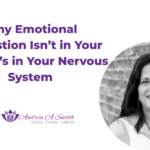A toxic workplace frequently elicits a visceral gut reaction in the professional realm. This toxicity can also occur in your home environment among family and friends. Your instincts, like how your body reacts to bad food or an overabundance of sweets, operate as an alarm system to warn you of negativity and toxicity.
As a professional, your anxiety levels can increase due to workplace stress, and you are experiencing discrimination, or your health is deteriorating – all of these things are happening simultaneously — there’s a serious problem. What advice is the best? Pay attention to your instincts. You may seek confirmation from a friend or loved one, but remember that your gut feeling is an expert in this area.
When the warning indicators apply to your current scenario, you may deal with more than just a hazardous setting and toxic workplace. You may be in a hostile work environment, which is not great as you need the money and have to work there as maybe another job for you at the moment is not an option. Sexual harassment, a lack of inclusivity, inappropriate comments regarding sexual orientation, colour, creed, or disability, a lack of human resources in a large organisation, pervasive bullying, and divided cliques are all signs of a truly unfriendly atmosphere.
Most people only think that toxicity affects people in the work environment, but it can also be among family and friends. You might be ignored or side-lined deliberately to social occasions if you have had a divorce or lost a partner, or suddenly found yourself in financial trouble. These people whom you considered friends and family now have ghosted you, and you feel awful and lost your sense of self or belief in the kindness of humanity.
The Symptoms of a Toxic Workplace – Remote Working
Do you believe your home office is safe from toxic work people? Consider again! The absence of face-to-face encounters with co-workers, a strong supervisor, or an aggressive work atmosphere does not guarantee the absence of toxicity. If your traditional office was a breeding ground for poisonous behaviour, these toxic tendencies have likely entered your remote work environment. As a result, it’s critical to remain attentive.
The Digitisation of Office Rumours
Here are some good and bad news. The good news is that online office gossip can be tracked, whether it spreads via messaging apps, side emails, or post-meeting recaps. What’s the bad news? It is still as harmful, wasteful, and toxic as the actual thing.
Even though it’s risky to leave a digital trail of nasty remarks or aggressive behaviour, some colleagues do it nevertheless. If you discover similar behaviour in your digital workspace, you have numerous options for dealing with it. First and foremost, refrain from engaging in gossip. Sure, it’s tempting when you’re working from home and bored, and office gossip appears to be fascinating. However, it is nothing more than a waste of your time. Workplace stress and work life balance can be helped with stress management techniques.
Determining whether an internet chat is a gossip can be difficult: According to body language specialists, vocal cues, including tone, account for 38% of a message’s impact, with 55% being wholly nonverbal. So, if you’re unsure about the content of a message, don’t be afraid to inquire. If you confirm it is, indeed, gossip, disengage. And if the gossip is damaging or targeted at someone (maybe even yourself), keep records.
Employees Are Ignored at Digital Meetings:
The transition to online meetings may exacerbate your situation if you have difficulty expressing yourself during in-person meetings. The lack of face-to-face contact can amplify common technical faults like latency, interruptions, and lack of eye contact, adding tension to an already stressful scenario.
Work-From-Home Burnout Is a Silent Epidemic:
Remote work may have freed you of your daily commute, but are you feeling more worn out than ever? And you feel relief that you are away from the toxic workplace but a recent assessment on remote work burnout found that 68 % of remote employees suffer from serious burnout. What’s the reason? Many of us are not truly unplugged from work. Home pressures, childcare, a partner juggling two careers in the same industry, also may have a toxic family member living with you. Blurring lines between home and office space can quickly lead to workplace burnout.
Imagine if everyone in your team is also experiencing burnout. This could swiftly transform a previously healthy workplace into a toxic one. To prevent this, make time for one-on-one meetings and regular breaks. Foster a culture of self-care and infuse moments of joy into your work week. Let’s talk wellbeing and mental health and wellbeing is an important part of this.
In conclusion, understanding the tell-tale signs of a toxic workplace, or home environment, both physical and remote, is the first step towards fostering a healthier, more productive work environment. Trust your intuition, stay aware, and take necessary actions to ensure your work life remains fulfilling and uplifting.
Consider the possibility that everyone on your team is suffering from burnout. This can quickly turn a previously healthy workplace into a toxic one. Make time for one-on-one meetings and regular breaks to avoid this. Create a self-care culture and incorporate moments of delight into your work week.
To summarise, recognising the tell-tale indications of a toxic workplace, both physical and remote, is the first step towards creating a healthier, more productive workplace. Trust your intuition about whom to trust or not, stay alert, and take the necessary steps to keep your work life pleasant and uplifting—also making sure that any toxicity from home is dealt with and you are practising self-care. Any questions BOOK a call with me, as a life coach near me and a certified life coach will freely talk to you about any issues you may have.










